Painting walls as a tradition arose quite a long time ago, but the exact date has not been determined. Of course, there are stories, almost epic, about dwellings painted with celestial bodies, there are excavations by archaeologists of dwellings in the Kyiv region of the 9th-12th centuries, where remains of frescoes are found. But this does not help to clearly determine the time of the emergence of this phenomenon.
This folk art of the 19th and early 20th centuries was very widespread in the culture of Ukraine, as evidenced by various studies of the culture and life of different regions of the country. This art is also mentioned in literary sources describing peasant life.
There is a version that wall painting originated and developed as a reflection of the Ukrainians' understanding of the surrounding world, which was depicted through magical signs or agricultural and everyday symbols. Over time, the sacred meaning gradually disappeared from the drawings, and ornamental, decorative drawing of the same signs developed, but with a different, more aesthetic content. And the magical, cult and ritual meaning came out of use. And from the 19th century. wall painting begins to take shape only as ornamental decoration and decor.
Wall painting was not one of the first types of art, it arose much later than others, such as embroidery, Easter egg making, carpet weaving or tile making. Therefore, it includes some traditions and elements characteristic of these types of decorative and applied arts, and combines them through its reflection. Wall painting sometimes replaced the usual methods of decorating a village home, sometimes it was used together with them, thereby emphasizing the construction and architectural features of a particular structure.
No preliminary sketches were made for the future drawing, the painting was not divided into stages and did not have a clear preparation scheme. It was done immediately or the previous drawing was simply renewed. It was done twice a year, and each time was tied to a certain event – a new anointing, that is, before the holidays in spring and autumn. The painting was done only by women.
The paints used for this action were usually of natural origin. It could be soot, elderberries, quinoa juice, onion peel decoction, cherry or mulberry juice, sunflower petals, or aniline dyes, clays were taken. Sometimes the plant juice was mixed with ground white clay, soot, crushed coal, or red clay was taken. Sometimes different clays were simply mixed. In this way, the craftsmen received a whole palette of colors, shades and the ability to mix them, creating new ones. Therefore, it was difficult to find painting with only two or three colors. A binder had to be added to the paints, so egg yolk or milk was added to them. Paint with such impurities was more durable and did not change its color, did not fade.
Paintbrushes were made from cat hair, and any kind of brush was used, even a regular rag if necessary. In order to correctly and clearly depict geometric shapes and lines, dishes and laces were used as patterns, and more complex shapes were made from potato tubers.
Painting began with the stove and on the chimney, after the stove it moved to the walls, passed over the windows, went around the corners. The stove was painted with birds depicted schematically - these were peacocks, griffins, pheasants. There, on the stove, they painted the tree of life with birds sitting on it, spirals, disks rotating around themselves, drew crosses, zigzags in a circle, performed floral ornaments, constellations. This symbolism was familiar even in primitive times. The walls were usually painted with the tree of life with birds and a symbolic jug, which is the basis for the growth of the bush. This jug was called a flowerpot. Marriage symbols were also often applied to the walls - these were grapes and birds of paradise.
Folk painting reflected the folklore-figurative awareness of the Ukrainians of the world around them, depicted in signs and symbols. They carried a cosmological understanding of the universe. Thus, painting was closely connected with the forces of nature, enlivened the structure, tied it to the world, to the earth, saturating it with earthly power. Thus, symbolism carried folk knowledge, beliefs and ideas about oneself, the world, the meaning of life.
The borrowing of traditions and elements of previous types and directions of folk art in painting is clearly visible, given its derivation from them and the time of creation. For example, from weaving, painting borrowed a broken line, similar to a zigzag, which is framed by two straight lines and crossed out with strokes between its breaks. A pattern called "braids" can be found on ancient clay products. In ancient manuscripts, a lotus leaf resembling chicken feet is found. Easter egg painting gave painting a spiral "rotor". And initially, the elements and parts of painting were very similar to the nature of ornaments in embroidery, carving, carpet weaving, etc. But time passes, and painting becomes an increasingly independent form of creativity, acquires its own features and motifs, composes its own system and patterns, and continues to develop according to its own laws.
The images of the wall painting are based on the agrarian-cosmological idea that human life and nature are connected and intertwined. Even the time of painting new paintings or renewing old ones is connected with this - it takes place on the eve of the Easter holiday, which since paganism has been a symbol of resurrection, revival of nature, life, the beauty of its flowering and vitality.
Why did the stove become the main compositional center of the painting? After all, it is there that fire lives - which is one of the elements of life-giving. And there, under the stove, if you believe the folk beliefs, lives the guardian of the home and hearth - the brownie. In addition, it was the cult of ancestors that focused attention on the stove: in ancient times, the dead were buried under the hearth. And considering that the painting was done by women, who were the guardians of traditions and beliefs, and themselves guarded the hearth of the home, all cult traditions and rituals were carefully preserved and respected by them.
The stove was often covered with geometric ornaments, the tree of life - reminiscent of pre-Christian times, when the souls of the living and the dead were connected through trees and plants.
So you can see that the main and most used element of the painting is the tree of life, the “vase”. It can be an independent composition, or it can be part of a ribbon – an endless ornament of the painting. Such an ornament is the most common in this form of folk art. It is depicted in embroidery, on carpets, ceramics, carved figures, painted chests, etc. In addition to the products and culture of Ukraine, the “vase” is also common in the art of Europe.
The tree of life in Ukrainian culture has a folklore origin: the tree and birds are a symbol of the universe. The three-tiered nature of the world was also conveyed by ideograms found in the painting of chests, sleds (backs), etc. The large solar sign of such ideograms symbolizes the luminary that gives life to everything around. Small solar signs also carry a symbolic meaning: flowerpots, birds - earthly life, fish and snakes - the otherworldly world.
Elements of grape leaves and chains on the "flowerpot" make up a "wonderful tree", symbolizing the well-being of the family, sometimes the bride. Time passed, various socio-historical conditions prevailed, and painting as an art gradually began to lose its deep meaning, being replaced by manifestations of rich creative imagination.
New types of painting acquired other forms and qualities, switched to other materials - for example, paper. The center of such "paintings" was the village of Petrykivka, located in the Dnipropetrovsk region. Initially, it was a substitute for certain details of wall painting, in certain places of the dwelling, but over time it branched off and became a separate independent art form. Petrykivka painting is close to the traditions of the art of painting Easter eggs. The central image in Petrykivka compositions stood out, this created the illusion that the drawing was curved outward, and this enhanced the perception of the composition as a rounded shape - in the shape of an egg.
Both the Easter egg and the painting on paper indicate the birth of life, flowering, the cyclical nature of development and the cycle of life. The painting of this direction of art, like wall painting, actively celebrates life in all its forms and manifestations. A bouquet, a flowerpot, a bush - all this symbolizes the tree of life. Petrykivka painting has its own characteristics: for example, the location of the central element - a flower, fruit or berry - is carried out in such a way that the image and angle are the most attractive, with many details and details, the most expressive of which are emphasized separately. The flower is usually turned with its head towards the viewer, can be drawn in semi-profile with a tilt to the front edge, a full-profile image is possible. Characteristic features of the Petrykivka drawing are also leaves turned towards the viewer, the outline of the contours is clear and expressive, with multi-colored features and lines - this makes the smallest details more noticeable on a white background. The paints for painting are thick, each stroke stands out very well, it is visible separately from the next one. In painting, everything is expressed through form, line, color. Elements do not overlap one another, exist separately and do not interfere with each other, a leaf does not hide a flower or stem, etc. This is a reflection of the peculiarities of folk life, in which there are no unnecessary details, accumulation of things, etc.
And to this day, the traditions of folk painting and folk drawing are developing. The craftsmen of the village of Petrykivka are known all over the world for their talented paintings and compositions. There is a concept of "naive painting" - and its representatives, Maria Pryimachenko, Kateryna Bilokur and other folk artists, have become recognized throughout world art.

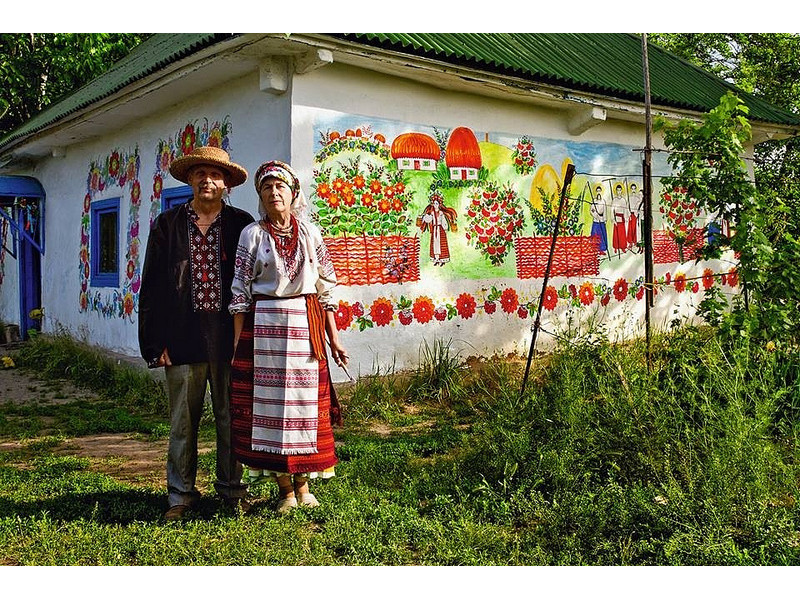
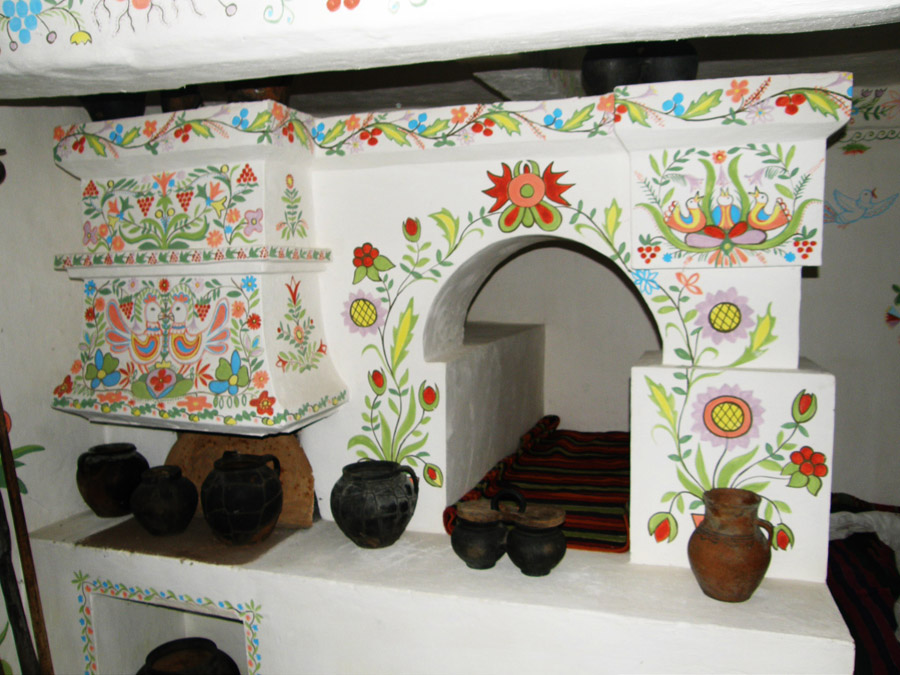
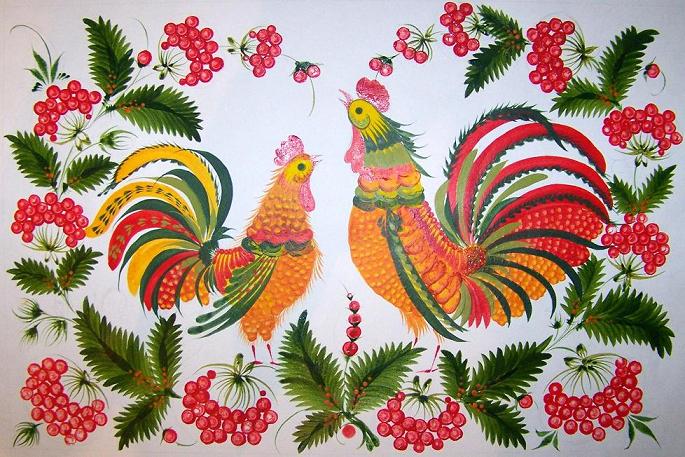
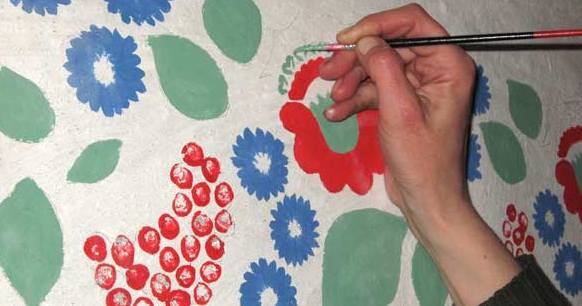

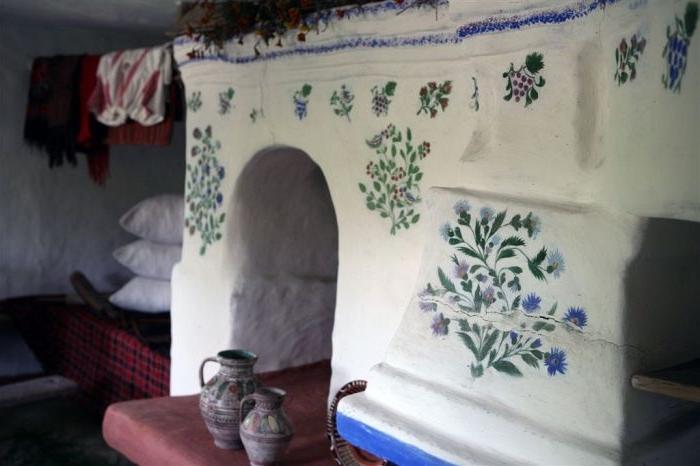
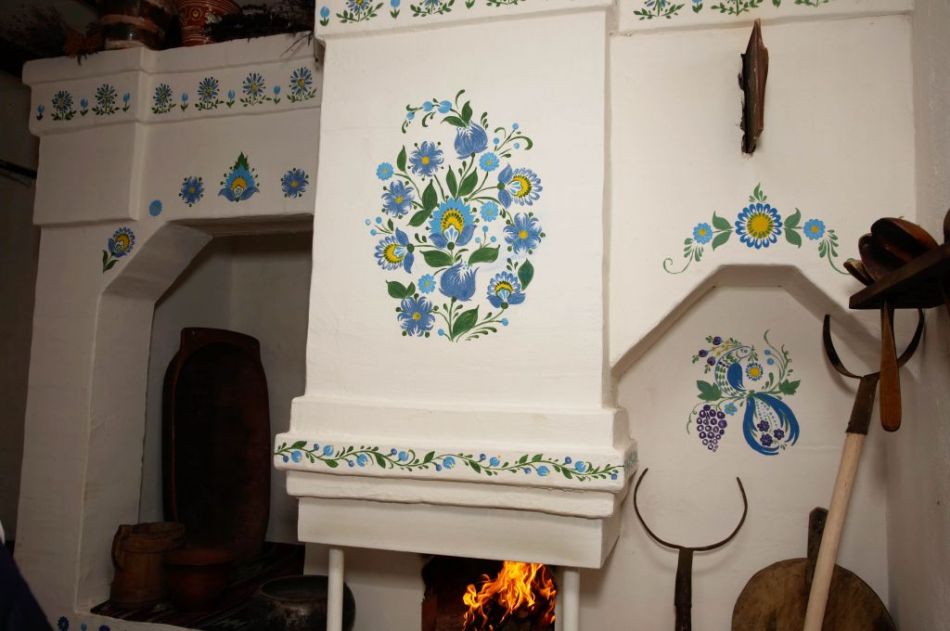
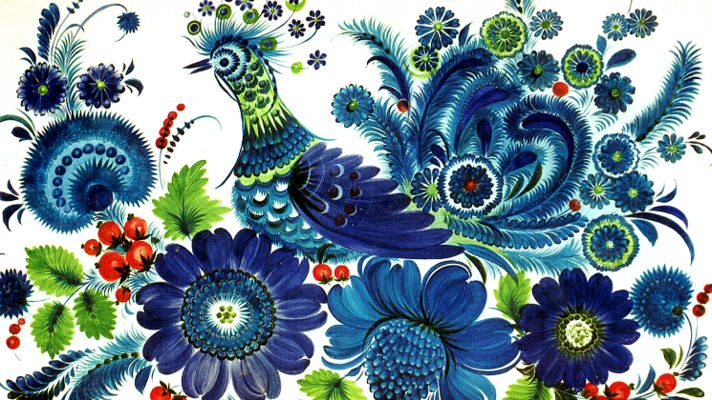
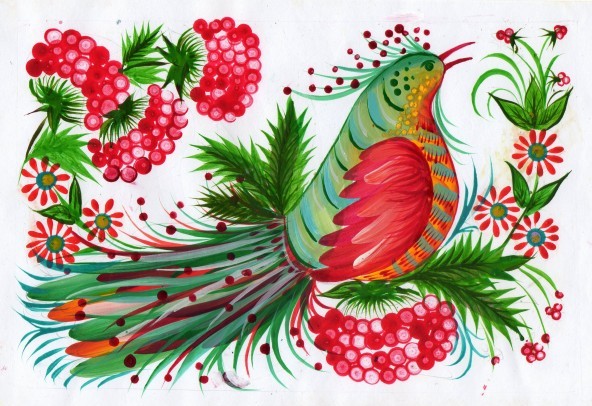
Write a comment